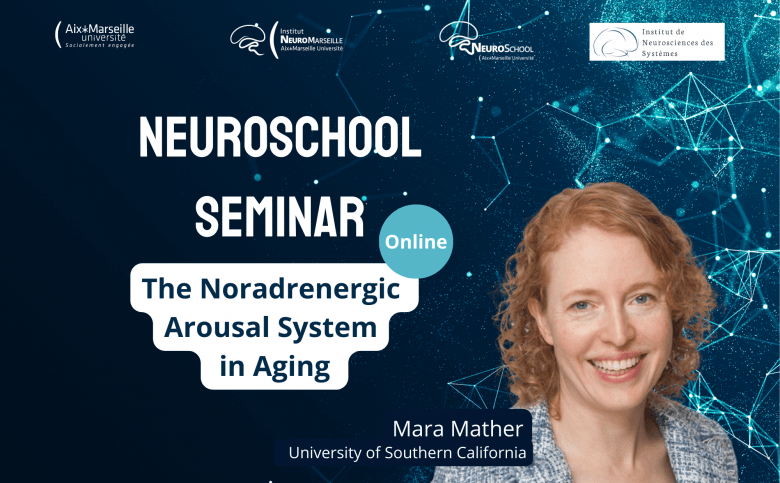Description de la soumission d'un avis

Séminaire NeuroSchool : Mara Mather
Le système d'excitation noradrénergique dans le vieillissement
Le système d'excitation noradrénergique dans le vieillissement
Séminaire par Mara MATHER
Département de Gérontologie, Psychologie et Ingénierue Biomédicale, Université de Californie du Sud
Le mardi 21 mars 2024, NeuroSchool invite Mara Mather à donner un séminaire en ligne sur le système d’éveil noradrénergique dans le vieillissement.
Mara Mather a mené des travaux novateurs sur le rôle critique du système noradrénergique dans la cognition et le vieillissement, sur la façon dont les émotions et l’éveil émotionnel affectent la cognition, et sur la façon dont l’induction de l’activité oscillatoire du rythme cardiaque profite aux réseaux cérébraux émotionnels et au cerveau vieillissant. Sur la base de ses travaux très cités, elle a été identifiée comme l’un des 1 % de scientifiques les plus importants au monde (Baas, Boyack, Ioannidis, 2021).
Résumé en anglais :
The locus coeruleus (LC) is a small brainstem nucleus that provides most of the brain’s noradrenaline. As the brain’s hub region for arousal, it integrates signals about wakeful, autonomic, and emotional arousal and coordinates brain activity to support the current arousal state. Our GANE model posits that, due to its interactions with local cortical excitatory activity, noradrenaline released under arousal can flexibly enhance processing of representations that currently have high priority. The LC’s role in aging is of particular interest because, before any other Alzheimer’s-related pathology can be detected in the cortex, initial indications of tau pathology appear in the locus coeruleus and slowly spread along its axons. Tau tangles appear in the initial cortical targets of the LC (medial temporal cortex and hippocampus) before other regions. More generally throughout the brain, release of noradrenaline can either promote or suppress the production and accumulation of amyloid-β and tau. Thus, LC function is likely to influence the rate of Alzheimer’s disease progression. Evidence suggests that stress-induced high tonic levels of LC activity accelerate Alzheimer’s disease while the phasic burst pattern of LC activity seen under conditions of novelty is protective. In a recent clinical trial, we used 5 weeks of daily slow paced breathing during heart rate variability biofeedback to reduce noradrenergic activity and increase parasympathetic activity, compared to an active comparison condition. Differential changes across the two conditions in LC structure and the volume of hippocampal subregions targeted by the LC suggest that this intervention affects the LC in ways that promote healthy brain aging.
Horaire :
- 15:30 : Discussion entre étudiants pour discuter des articles – Pour les doctorants uniquement – en ligne
- 16:30 : Séminaire – Ouvert à tous – en ligne
- 17:30 : Temps de discussion spécial avec l’orateur – Pour les doctorants uniquement – en ligne
📢 Doctorants : inscrivez-vous sur AMETICE et pensez à signer la feuille de présence en ligne pour que vos heures soient comptabilisées. Les assistants bénéficient de 3 heures, les chairpersons de 4 heures.

